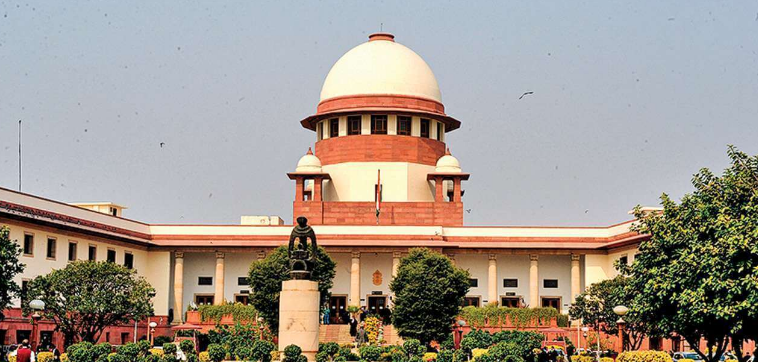Author: Swarali Ghorpade, ILS College
To the Point
CBI v. B. Ramalinga Raju & Others is a landmark case in India’s corporate and legal history, centered on the Satyam Computer Services Ltd. accounting fraud, which came to light in January 2009. B. Ramalinga Raju, the company’s founder and then-chairman, publicly admitted to falsifying the company’s financial statements over several years. The fraud involved overstating revenues, profits, and assets to the extent of approximately ₹7,000 crore, making it one of the largest corporate scams in India. This confession led to a massive erosion of investor trust, sharp declines in stock value, and a serious shake-up in India’s IT and corporate sectors.
The case was swiftly handed over to the Central Bureau of Investigation (CBI), which conducted an extensive investigation and filed multiple chargesheets against Ramalinga Raju and others, including key executives and auditors. The accused were charged under several sections of the Indian Penal Code, such as Section 120B (criminal conspiracy), Section 420 (cheating), Section 467 and 468 (forgery), and Section 409 (criminal breach of trust). The role of PricewaterhouseCoopers (PwC), Satyam’s auditors, also came under scrutiny for failing to detect or report the accounting irregularities.
The trial was conducted by a special CBI court in Hyderabad, which, in April 2015, convicted Ramalinga Raju and nine other accused. They were sentenced to seven years of rigorous imprisonment, along with fines, marking a rare instance of significant punishment in a white-collar crime case in India. The court held that the scam was premeditated and meticulously executed, involving forged board resolutions, fake invoices, and fictitious bank statements to mislead investors, regulators, and stakeholders.
Abstract
The case of CBI v. B. Ramalinga Raju & Others represents a pivotal moment in the evolution of corporate law and enforcement in India. Triggered by a rare confession from a top executive, the case drew national attention to the vulnerability of stakeholders in the face of unchecked corporate malpractice. Beyond the fraud itself, the proceedings reflected deep-rooted issues in regulatory vigilance, auditor independence, and boardroom ethics. The CBI’s prosecution and the subsequent judicial process tested the capacity of India’s criminal justice system to deal with complex financial crimes. The conviction of top executives sent a strong message, but also highlighted the urgent need for systemic reforms, including faster adjudication and stricter corporate compliance mechanisms. This case remains a cornerstone reference in academic, legal, and policy circles for its broad implications on accountability, investor protection, and governance frameworks in emerging economies. This case continues to be studied as a foundational model in corporate law, forensic accounting, business ethics, and regulatory practice. It highlights the importance of independent audits, board transparency, and effective whistleblower mechanisms. The role of the judiciary and investigative agencies, particularly the CBI, also demonstrated the challenges and necessity of inter-agency cooperation in navigating financial crimes that are both technically complex and high in public interest. As a case study, it offers lasting lessons on the importance of corporate integrity and the ongoing need to fortify legal and institutional safeguards in emerging economies.
Use of Legal Jargon
The case hinged on the application of several penal and procedural provisions under Indian law, primarily involving offences under the Indian Penal Code (IPC) such as Section 120B (criminal conspiracy), Section 409 (criminal breach of trust by a public servant, banker, merchant or agent), Section 420 (cheating and dishonestly inducing delivery of property), and Sections 467, 468, and 471 (forgery and use of forged documents as genuine). The prosecution relied heavily on documentary evidence, including falsified financial statements, fabricated invoices, and manipulated bank records, all of which were admitted under the rules of evidence law. The trial was conducted before a Special CBI Court, established under the Criminal Procedure Code (CrPC) to ensure expeditious adjudication of complex economic offences. The court exercised its powers of judicial discretion while evaluating the mens rea (criminal intent) of the accused, particularly with respect to their deliberate orchestration of the fraudulent scheme. Additionally, the involvement of external auditors raised questions of vicarious liability and professional negligence, although they were not primary accused in the criminal trial. The case also illustrated the role of regulatory jurisprudence, as parallel proceedings were initiated by SEBI and the Ministry of Corporate Affairs (MCA) under civil and administrative law, including the Companies Act and SEBI Act, thereby invoking the principle of concurrent jurisdiction. This multi-pronged legal approach underscores the intersection of criminal, corporate, and regulatory law in addressing white-collar crime.
The Proof
In the case of CBI v. B. Ramalinga Raju & Others, the prosecution presented a mix of documents, digital records, and witness testimonies to prove the occurrence of corporate fraud. Central to the case was the discovery of fabricated financial records, including inflated revenue figures, fictitious client accounts, and non-existent cash balances reflected in company bank statements. These were uncovered through forensic audits conducted by independent agencies appointed after the scam broke. The prosecution introduced forged invoices, altered bank reconciliation statements, and manipulated general ledger entries, which revealed discrepancies between actual and reported income and assets.
Crucial evidence also came from the confessional letter written by B. Ramalinga Raju himself, in which he admitted to systematically falsifying accounts for several years. While the confession by itself was insufficient to guarantee a conviction, it served as a crucial starting point for gathering supporting evidence. The CBI matched this letter against a trail of email communications, board meeting records, and internal accounting memos, establishing the complicity of senior management and finance officials.
Case Laws
N. Narayanan v. Adjudicating Officer,
SEBI (2013) 12 SCC 152
In this landmark decision, the Supreme Court held that directors and key managerial personnel have a fiduciary duty toward shareholders and can be held personally liable for misleading disclosures and violations under SEBI regulations. The Court stressed that economic offences must be dealt with an iron hand, especially when they involve public trust and investor confidence. It clarified that regulatory authorities like SEBI have wide discretion in ensuring that corporate fraud is not tolerated. Relevance to Satyam: In the Satyam case, Ramalinga Raju’s deliberate misstatements had a direct impact on investors, making this ruling pertinent to the principle of individual liability for corporate wrongdoing.
2. Iridium India Telecom Ltd. v. Motorola Inc.
(2011) 1 SCC 74
The Supreme Court held that companies can be held criminally liable for offences requiring mens rea (criminal intent), and prosecution is maintainable even against a non-human legal entity. The Court rejected the argument that only natural persons can possess intent. It emphasized that corporations act through individuals, and intent can be imputed through them. This ruling supports the prosecution of Satyam Computer Services Ltd. as a juristic person, apart from its directors, showing that corporate entities are not immune to criminal prosecution.
3. State of Gujarat v. Mohanlal Jitamalji Porwal
Citation: (1987) 2 SCC 364
In this case, the Court emphasized the harmful nature of economic offences, stating that white-collar crimes are often more damaging than ordinary street crimes due to their widespread financial and social impact. The judgment warned against leniency in such cases and highlighted the role of the judiciary in ensuring economic justice.
The scale and planning involved in the Satyam fraud reflected the very kind of white-collar criminality described in this case, reinforcing the need for strict punishment and deterrence.
4. Institute of Chartered Accountants of India v. Mukesh R. Patel
Citation: (1998) 4 SCC 264
The Supreme Court dealt with the standards of professional conduct expected from chartered accountants, ruling that negligence or willful misconduct in certifying misleading accounts can attract disciplinary and legal consequences. The case reinforced the importance of the Institute of Chartered Accountants of India (ICAI) in upholding professional ethics within the accounting field. In the Satyam case, PricewaterhouseCoopers (PwC) was criticized for failing to detect blatant financial irregularities, making this precedent relevant to questions of auditor liability and oversight.
5. Sahara India Real Estate Corp. Ltd. & Ors. v. SEBI
Citation: (2012) 10 SCC 603
The Supreme Court upheld SEBI’s jurisdiction to regulate and investigate unlisted public companies if they affect investor interest. It ruled that SEBI could demand refunds and take enforcement action even in grey areas not explicitly covered by the Companies Act, as long as investor protection was at stake. After the Satyam scam broke, SEBI played a crucial role in stabilizing market confidence. This judgment supports strong regulatory intervention in cases involving corporate deception and public trust.
Conclusion
The CBI v. B. Ramalinga Raju & Others case marks a critical chapter in India’s corporate and legal landscape, serving as a powerful reminder of the devastating consequences of unchecked corporate greed and governance failure. It highlighted systemic lapses across multiple layers—from fraudulent financial reporting to auditor negligence and inadequate regulatory oversight. The convictions of Ramalinga Raju and other senior executives signaled a significant, though delayed, assertion of legal accountability in complex white-collar crimes. More importantly, the case spurred meaningful reforms in corporate governance, statutory auditing standards, and regulatory enforcement mechanisms in India, including tighter provisions under the Companies Act, 2013. While it restored some faith in the justice system, it also exposed the urgent need for faster adjudication and stronger safeguards to prevent such frauds in the future. Ultimately, the Satyam scam remains a cautionary tale of how corporate deception, if left unchecked, can undermine not just a company, but public trust in the entire financial ecosystem.
FAQs
1. What was the CBI v. B. Ramalinga Raju & Others case about?
This case involved the prosecution of B. Ramalinga Raju, founder of Satyam Computer Services Ltd., and others for orchestrating one of India’s largest corporate frauds. The scam involved falsifying company financials by inflating revenues, profits, and bank balances over several years.
How did the Ramalinga Raju & Others v. SBI case impact corporate governance practices in India?
The case highlighted severe lapses in corporate governance and internal controls, prompting regulatory bodies like SEBI and the Ministry of Corporate Affairs to strengthen compliance frameworks. It led to reforms aimed at increasing transparency, improving auditor accountability, and ensuring stricter oversight of corporate financial reporting.
3. What role did the CBI play in the investigation?
The Central Bureau of Investigation (CBI) was entrusted with probing the scam after the initial revelations. It conducted a detailed forensic investigation, filed multiple charge sheets, collected digital and documentary evidence, and prosecuted the key accused in a Special CBI Court in Hyderabad.
4. What was the outcome of the case?
In April 2015, the Special CBI Court convicted Ramalinga Raju and nine others, sentencing them to seven years of rigorous imprisonment and imposing fines. The court determined that the fraud was intentional, strategically executed, and extensive in magnitude.
5. What role did forensic audits play in the Ramalinga Raju & Others v. SBI case?
A: Forensic audits were crucial in uncovering the extent of financial manipulation carried out by Satyam’s leadership. These audits provided detailed insights into falsified accounts, inflated revenues, and concealed liabilities, forming a key part of the evidence used by the prosecution and financial institutions like SBI to establish fraud and seek recovery.
6. What broader impact did the case have on Indian corporate governance?
The Satyam case prompted major reforms in India’s corporate laws. Notably, the Companies Act, 2013 introduced stricter rules on board responsibilities, auditing standards, whistleblower protections, and disclosure requirements. It also increased penalties for fraud and misconduct by company executives.




